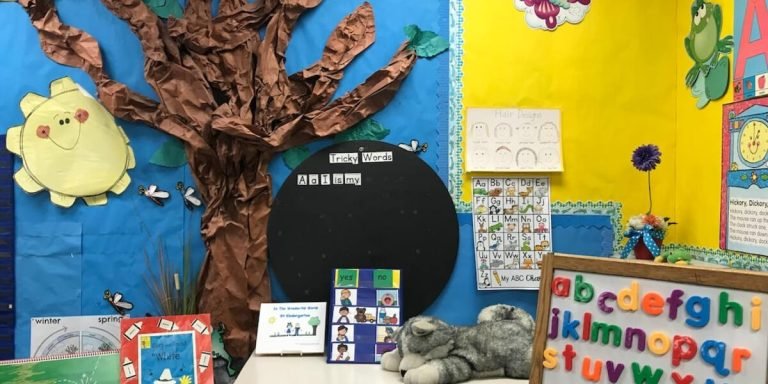Augmented Reality in Education: Fostering Interactive Learning Experiences
The advent of technology has brought about significant changes in various sectors, not sparing the education sector. One such technological breakthrough is augmented reality – a tool with immense potential to revolutionize learning experiences. Augmented Reality in Education isn’t simply a buzzword anymore; it’s turning into an appealing and practical way to engage students more actively.
This technique seamlessly blends digital objects into the real world, providing learners with interactive experience that boosts understanding and retention of knowledge. Combined with traditional teaching methods, augmented reality can foster stimulating educational encounters that cater uniquely for every child’s learning style. This blend illustrates how fundamental Technology Integration in Education is becoming today.
Did you know?
Augmented Reality (AR) has been found to increase learning motivation by 73% in students, creating an interactive educational environment that drives engagement and information retention.
Exploring the Impact of Augmented Reality on Learning Environments
Augmented reality, a rapidly growing technology trend in 2023, is dramatically altering the landscape of education. By blurring the line between physical and digital experiences, Augmented Reality (AR) offers immersive learning environments that once seemed to belong solely within science fiction narrative realms. It allows educators not only to elucidate complex concepts but also engage students at an unprecedented level by providing interactive simulations.
This technology’s impact on learning spaces is multifaceted and profound. In traditional classrooms bounded by four walls, AR can transport learners into diverse contexts—from exploring ancient civilizations right in their history classes or diving undersea to study marine ecology during biology lessons—making theoretical knowledge tangible through visual overlays of digital information onto real-world scenarios.
Moreover, it encourages active participation instead of passive consumption among pupils—a pivotal shift fostering critical thinking skills which are crucial for thriving amid 21st century challenges. Notions such as problem-solving or strategic planning take on entirely new dimensions when e-learning involves collaborative tasks completed via engaging with augmented realities. This tech-focused integration indeed holds significant potential for redefining teaching paradigms while enhancing educational outcomes markedly.
The Role of AR in Facilitating Interactive Classrooms
Augmented Reality (AR) plays a significant role in facilitating interactive classrooms and revolutionizing traditional teaching methods. By integrating AR into the classroom, educators can create engaging lessons that bring abstract concepts to life.
Augmented reality merges digital information with real-world environments to create immersive learning experiences for students. Here are the ways augmented reality influences modern education settings:
1. Enhancing Student Engagement: Gone are days of one-dimensional learning through textbooks or lectures alone. With AR tools, students interact with their study material on an entirely new level which boosts their interest and engagement.
2. Bridging The Gap Between Theory And Practice: A vital benefit of using augmented reality in education lies in its ability to bridge theory-practice gap effectively by providing hands-on experience particularly invaluable for subjects such as science and engineering.
Enhancing Student Engagement Through Immersive Technologies
As technology continues to evolve, it significantly impacts various sectors including education. One specific advancement that has taken center stage is augmented reality in education. This innovative concept allows educators and students alike to bridge the gap between theoretical knowledge and practical application.
Augmented Reality (AR), a unique tool for immersive learning experiences, transforms traditional classrooms into dynamic environments where learners can interact with digital objects within their real environment – an integration of virtual components with our natural world. AR takes teaching beyond passive lectures; instead, activating imagination while stimulating curiosity as well as focus.
An important effect of incorporating augmented reality in education lies in boosting student engagement rates. Through 3D models or interactive lessons projected onto physical spaces around them, students become more involved participants rather than being mere observers during classes sessions allowing them better understand complex concepts effortlessly compared to conventional methods.
Bridging Theory and Practice with AR in Educational Settings
The advent of augmented reality (AR) in education has immensely transformed the way information is delivered to youngsters. AR, being an immersive and interactive technology, aids in bridging theory and practice effectively within educational settings. It does this by blending digital elements into a live view – making abstract concepts more tangible for students.
Teaching methodologies are continually evolving with our ever-changing technological landscape. Augmented reality brings learning materials to life with 3D models and interactive experiences that improve understanding while fostering curiosity among young learners. This enhanced engagement can make even complex subjects like physics or mathematics accessible and fun-filled.
Not just restricted to academics; it also plays a significant role in honing skills like critical thinking, problem-solving abilities as well as improving fine motor dexterity through game-based applications which essentially prepares children for future career paths where such capabilities will be highly valued.
In conclusion, by integrating cutting-edge technologies like AR into today’s classrooms we’re encouraging personalized & iterative learning while ensuring digitally literate citizens who’ll invariably contribute positively towards society at large tomorrow.
Revolutionizing Vocational Training via Augmented Simulations
Augmented reality (AR) is changing the dynamic of educational settings, including vocational training. In fact, it’s a growing trend in 2023 to integrate this immersive technology into learning environments and has become synonymous with modern education.
Firstly, augmented reality assists in fostering realism within vocational training programs by providing hands-on experience through simulations. This innovative approach bridges traditional teaching methods and real-life situations seamlessly. Students can practice their skills repetitively until they master them before transitioning into actual work scenarios.
Secondly, AR enhances student engagement levels immensely. The interactive elements increase curiosity among learners while making complex subjects more digestible – a very key element when tackling tough-to-teach topics or disciplines that require intense concentration and understanding.
Moreover, using augmented reality in education also encourages self-paced learning as students can access information at their convenience without any time restrictions – ensuring inclusivity for all types of learners whether slow-learners or quick-graspers!
Advancing Science Education through 3D Visualization
Drawing from research-based practices using augmented reality (AR) can immensely benefit educators and learners alike.
Science subjects are often challenging for students due to their complex concepts and abstract nature. By leveraging AR technology, these difficult theories become accessible via tangible three-dimensional models that help turn abstract ideas into understandable visuals they can explore at different angles.
Think about a biology class where instead of looking at two-dimensional diagrams in textbooks or watching videos on cell division, students could interact with 3D animated cells right before their eyes. They would gain a firsthand view and understanding of how each organelle works together as part of the larger system – something impossible with traditional methods!
Augmented Reality also promotes active learning; this keeps engagement levels high while facilitating better comprehension because it’s always easier to understand something we’re physically involved with than simple textbook readings.
Moreover, evidence shows AR invigorates curiosity among young minds by providing them immersive experiences which lead to intrinsic motivation towards learning more about science.
Challenges and Solutions for Implementing AR Technology in Schools
The advent of augmented reality (AR) has revolutionized several industries, and education is no exception. However, integrating this futuristic technology into traditional classroom scenarios isn’t without its challenges. One major hurdle that schools face when applying AR in teaching methods relates to infrastructure constraints.
Many educational institutions may lack the necessary hardware devices like tablets or glasses required for students to experience AR applications fully.
Moreover, not all teachers are trained or equipped with sufficient knowledge about executing such advanced technologies in their classrooms successfully. The task of training educators effectively on how they can incorporate AR tools into lessons presents another set of difficulties as well.
Navigating the Technical Requirements for AR Integration
The introduction of augmented reality in education opens a plethora of learning opportunities for students. However, seamlessly integrating this technology into the current school system can pose significant challenges. To overcome these hurdles and make way for an enriching educational experience that AR has to offer, it is essential to first understand what goes into running augmented reality applications efficiently.
Firstly, high-quality hardware is non-negotiable when dealing with advanced tech such as Augmented Reality (AR). Schools must ensure they have enough devices like tablets or smartphones compatible with AR software. These tools should be equipped with sharp cameras and strong processors to handle complex 3D models without any latency issues.
Secondly comes bandwidth considerations & internet connectivity. As most AR services are cloud-based at its core, robust Wi-Fi access becomes crucial throughout the campus area.
A slow or unreliable connection will sabotage all your efforts toward implementing efficient augmented reality in schools by causing delays and disruptions during class sessions.
Moreover, supplementary costs involved cannot be ignored while acknowledging technical requirements; things like device maintenance expenses over time due to wear-and-tear policy subscriptions related directly/indirectly towards achieving successful implementation come under this flagbearer requirement!
Last but not least would be addressing security concerns associated primarily here: securing sensitive student data from potential cyber threats considering their increasing prevalence globally through enhanced cybersecurity measures plays quite instrumental role then!
Developing Effective Curricula Incorporating Augmented Experiences
In the present era, augmented reality in education is steadily becoming a cornerstone. One of its key applications lies within curriculum development – an area where this technology can truly shine.
Developing effective curricula that incorporate augmented experiences presents several challenges, but also introduces numerous opportunities to revolutionize classroom learning.
Indeed, creating such curricula requires careful planning and consideration. Educators must first understand the process behind integrating AR into their lesson plans effectively. This involves grasping how AR works and identifying areas where it might be most beneficial.
An essential part of this process includes setting clear objectives for what students should learn from using these tools. For instance, if you’re teaching history with the use of AR, your goal could range anywhere from helping students visualize ancient civilizations to understanding complex historical events more intricately.
Next comes designing engaging activities around these learning goals – ones which utilize interactive features inherent in the software so as to encourage active student engagement rather than passive consumption.
However context matters too: It’s important that educators ensure AR fits seamlessly into wider unit or course themes instead of simply being tacked on as afterthoughts just because they are technologically advanced or intriguing novelties .
Hierarchical organization is another major element when considering integration strategies . To make sure all students find value at every level , lessons incorporating digital augmentation need varying complexity levels based on different learner capabilities . In other words , ‘one size does not fit all’ remains an incredibly relevant mantra here !
Conclusion
In conclusion, incorporating augmented reality in education is not just a trendy foray into the technology bandwagon. It’s an educational revolution on its own right, aiding interactive learning experiences and captivating young minds like never before. The traditional chalk-and-talk method of teaching has had its day; it’s time to welcome this new-age tech intervention that promises immersive engagement coupled with enhanced understanding.
We urge you to dive deeper into the realm of childhood education and explore our website further for more innovative insights. We are committed to providing expert guidance on educating children and offering ample support resources for parents as well as educators across all areas of modern pedagogy. Remember – A little curiosity can open up a world full of knowledge!







